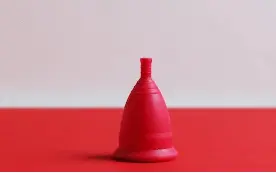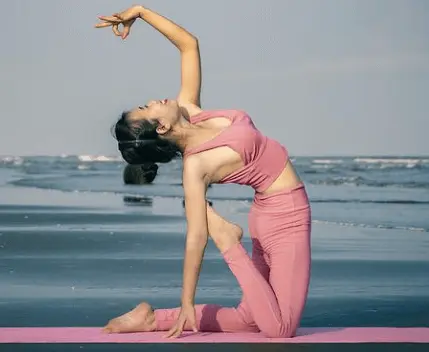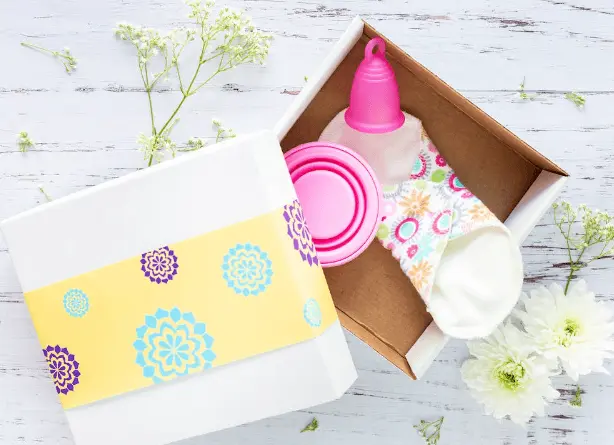Many changes in your body can happen when you start to exercise regularly. You may have sore muscles, lose weight, sleep better, and gain strength. But you may not expect that regular exercise can also cause changes in your menstrual cycle.
Exercise can change your period by causing a lighter, shorter, or postponed flow and can reduce PMS symptoms. However, exercise can change your menstrual cycle by causing breakthrough bleeding or missed periods.

Exercise can affect your period in several ways, but there’s no evidence to show that working out will make your flow heavier. Regular workouts are one of the most effective methods for how to get a lighter period or easing menstrual symptoms.
Can exercises cause irregular periods?
Exercise and menstrual cycle irregularity are pretty common. While regular exercise has the ability to lighten your flow and cause spotting, it can also stop your flow, which can create confusion and concern.
Exercising during menstruation help with periods:
Exercise doesn’t need to be strenuous nor happen every day to help. A recent study found that exercise can help with at least 30 chronic diseases. There are physical and chemical changes that occur in the body during menstruation that can be alleviated through exercise.
Missed Periods
Exercise is generally good for you. But for some people, the stress that intense exercise places on the body can interrupt the balance of hormones that drive their menstrual cycle. Missing your periods as a result of strenuous exercise is called exercise-induced amenorrhea.
The hypothalamus is a structure in your brain that acts as the control center for your menstrual cycle. It sends hormonal messages to your pituitary glands and your ovaries, which in turn trigger ovulation. If this communication gets interrupted by something that causes your body stress.
Likewise intense exercise or significant weight loss, you will not ovulate. If you do not ovulate, the changes that trigger your menstruation will not happen and you will miss your period. An extreme form of exercise-induced amenorrhea is known as the female athlete triad.
The female athlete triad describes a specific condition in adolescent and young female athletes who experience the following:
- Menstrual cycle problems
- Low caloric intake
- Low bone mineral density

The combination of intense exercise and low caloric intake puts significant stress on the young athlete’s body. In response to this stress, the hypothalamus starts to stimulate the ovaries less. Eventually, ovulation stops, along with the athlete’s periods.
Over time, her ovaries slow down hormone production, and her estrogen level drops, which causes bone loss and other negative health effects. The female athlete triad is common among young female ballet dancers, especially teenagers who are training hard while trying to maintain low body weight due to the pressure they sometimes face to be thin.
Change in Your Flow:
Don’t be alarmed if you notice that your periods become a bit lighter once you start regularly exercising. The same hormonal changes that can stop your periods altogether can also lead to a lighter flow. Additionally, regular exercise can lead to weight loss, which may also lead to a lighter flow.
Body fat (adipose tissue) actually produces a type of estrogen. Excess estrogen in your body can cause the lining of your uterus to build up more than usual during the first half of your cycle. The thicker the lining, the heavier your menstrual flow.
Weight loss, therefore, decreases the amount of estrogen in your body, which in turn decreases the buildup of your uterine lining that occurs each cycle. A thinner lining means a lighter flow.
Intense exercise can interrupt the balance of hormones that drives your menstrual cycle. This can cause you to bleed when you are not on your period, have a lighter flow than normal, or stop having a flow at all. Young athletes, especially those who are eating very little, are well known to experience this.
Achieving a healthy balance
To train your hardest, you need to eat the right foods to fuel your body. Patton says, “This will build muscle and prevent injury.”To prevent the serious health consequences associated with the Female Athlete Triad:
- Eat three full meals each day.
- Balance meals with carbohydrates, protein, and fat.
- Never omit certain food groups, such as fats. Omitting food groups is a sign of disordered eating.
- Eat within 30 to 60 minutes of finishing all workouts.
- Eat post-workout meals high in carbohydrates and moderate in protein. Some good examples include sandwiches & fruit, bagels with peanut butter and chocolate milk, energy bar and yogurt with granola, or spaghetti with meatballs, salad, and fruit.
- Have a minimum of three carbohydrate-rich snacks throughout the day.
- When workouts last more than 90 minutes, eat 15 grams of carbohydrates or drink a sports beverage every 15 to 30 minutes.
- Consume adequate amounts of calcium daily: 1,000 to 1,300 mg per day. Best sources include milk, yogurt, nondairy milk (such as soy, and almond), cheese, calcium-fortified orange juice, and dark green leafy lettuce.
Decrease PMS symptoms
If you experience fatigue and mood swings in the days leading up to your period and during your cycle, regular aerobic exercise may lessen these symptoms.
Common physical symptoms of premenstrual syndrome (PMS) :
- Breast tenderness
- Bloating
- Weight gain
- Headache
- Swelling of the hands and feet
- Fatigue
- Skin problems
- Gastrointestinal issues
- Abdominal pain and cramping
- Mood changes like irritability, anxiety, depression, and social withdrawal
- Poor concentration
- Insomnia
- Changes in sexual desire.
Exercise can change your period by causing a lighter, shorter, or postponed flow and can reduce PMS symptoms. However, exercise can change your menstrual cycle by causing breakthrough bleeding or missed periods.
Exercise can affect your period in a number of ways, but there’s no evidence to show that working out will make your flow heavier. In fact, regular workouts are one of the most effective methods for how to get a lighter period or easing menstrual symptoms.
Will Exercising while on period make you more calories:
While you should still exercise regularly, there’s no data to prove that exercising while you’re on your period makes you burn more calories. But exercising may make you feel physically better when you’re on your period by reducing symptoms like cramping and back pain.
How to tell whether your periods are irregular:
Many women will experience irregular periods at some point in their lives. It’s particularly common for young women to experience highly irregular periods — including very long periods — during their first few years of menstruation. Their periods will often shorten and stabilize between one and three years after menstruation begins.
Benefits of exercising during periods:
The physical and mental benefits of exercise don’t stop just because you have your period. In fact, sticking with a routine can actually help ease some of the common complaints that accompany menstruation.

According to Dr.Christoper, the period is a complex time from a hormonal standpoint. “Both progesterone and estrogen are at their lowest during the entire length of the period phase of the menstrual cycle, which can make people feel tired and less energetic,” he explained.
With that said, avoiding exercise isn’t going to save energy or make you feel better. Instead of ceasing all activity during your period, use this week as an opportunity to try some new workouts. Here are five benefits of exercising during your period.
Exercises during the period:
If you experience fatigue and mood swings in the days leading up to your period and during your cycle, regular aerobic exercise may lessen these symptoms. Because exercise gives you a natural endorphin high, it can elevate your mood and actually make you feel better.
Best exercises to do on your period:
Most people would suggest that during your period, it’s better to do the exercises you can tolerate, that are good for your body and that you like to do. For many people, the first day or two of their period maybe not be the best time to exercise.
This is typically due to a heavier flow. During this time, you may feel more comfortable exercising at home. If the first few days of your periods are difficult, take it easy and make modifications to your workouts as needed.
- Walking: This is an easy exercise that doesn’t require any special equipment, clothing, or location. You can take as much time as you have or need, and you can adjust your speed however you want.
- Light cardio or aerobic exercise: This is not meant to be a stressful workout. The key word here is “light.” Whether you’re jogging, cycling, swimming, or anything else, take it easy and/or consider a shorter workout than normal.
- Strength training: If you’re up for it, try some gentle strengthening exercises and consider lighter weights than you might normally use. Avoid heavy-duty lifting at this time in your cycle.
- Gentle stretching and balancing: Yoga is great for relaxing the muscles and decreasing cramps and pain. Pilates is good for stretching muscles and reducing cramps and pain. Tai chi is good for reducing tension and stress.
Conclusion:
Your period blood color and texture can change from cycle to cycle or even day to day, especially during certain stages of life, like when you’ve just started menstruating or are headed to menopause. Most changes in period color aren’t a big deal, but it’s worth making a note of it, along with any other symptoms. Don’t hesitate to talk with a healthcare professional if you have any concerns about your period.
